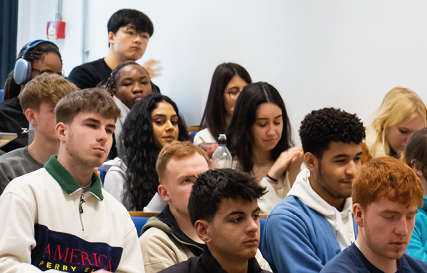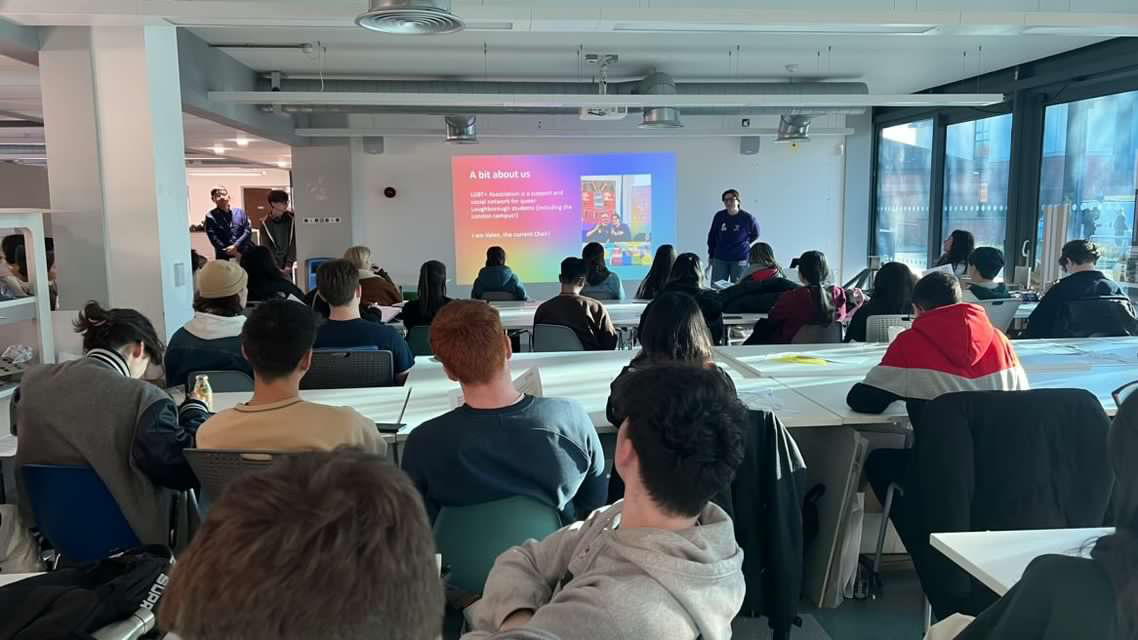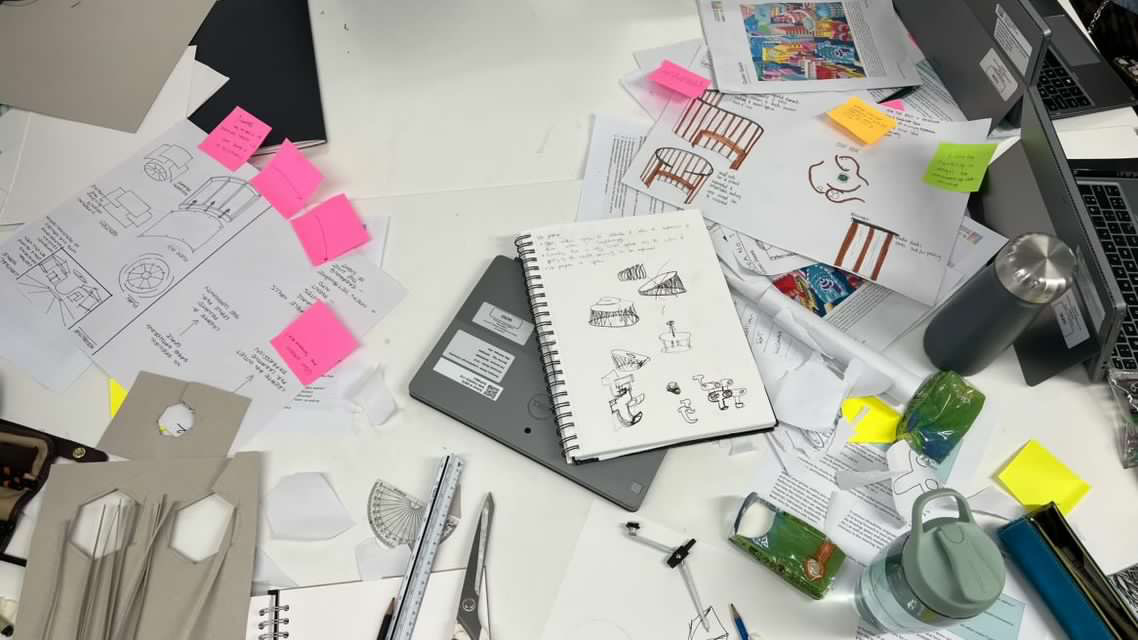Queer Spaces
An LU Arts, LU Architecture & Lboro LGBT+ Association project
LU Arts is collaborating with LUArc and the LGBT+ Association to develop a new ‘queer space’ for the University campus.
Each year the Architecture students are asked to develop ideas for a pavilion with one design being selected and built by the students. This year, LU Arts supported the costs of creating a new space that supports or celebrates our LGBT+ Community. During the week of 6 Feb the architecture students undertook co-design workshops where they collaborated with members of the LGBT+ Student Association to help inform their ideas and designs.

We were delighted to be able to begin the week with a presentation from Adam Nathaniel Furman, co- author of the influential publication Queer Spaces, in which they presented their career from a queer perspective, their experience of the British architecture scene’s queerphobia, discussed some examples of historic, contemporary and speculative LGBTQIA+ spaces from around the world as well as discussing architecture’s role in responding to societal change and ensuring that architects consider the space of representation for different communities.

About the artist
Adam Nathaniel Furman is an artist and designer who trained in architecture, and who works in spatial design and art of all scales from video and prints to large-scale public artworks, architecture, architecturally integrated ornament, as well as products, furniture, interiors, publishing, and academia.
LU Arc students then went away for inspired for preparatory lectures and consultation periods, before a co-design day began. They gathered ideas, defined the problem set to them by LGBT+ staff and students before beginning exploration and design the next day. Students formed groups and created design proposals and developed proposition, drawings, studies and models of their chosen designs. Fabrication & test of element and connections allowed them to realise if their prototype models were structurally sound, before final digital and model presentations were displayed.
Winning Designs
The LGBT+ staff and students associations were invited to choose the winning designs which are to be worked on to produce a final design which will be built by the end of this year at latest.
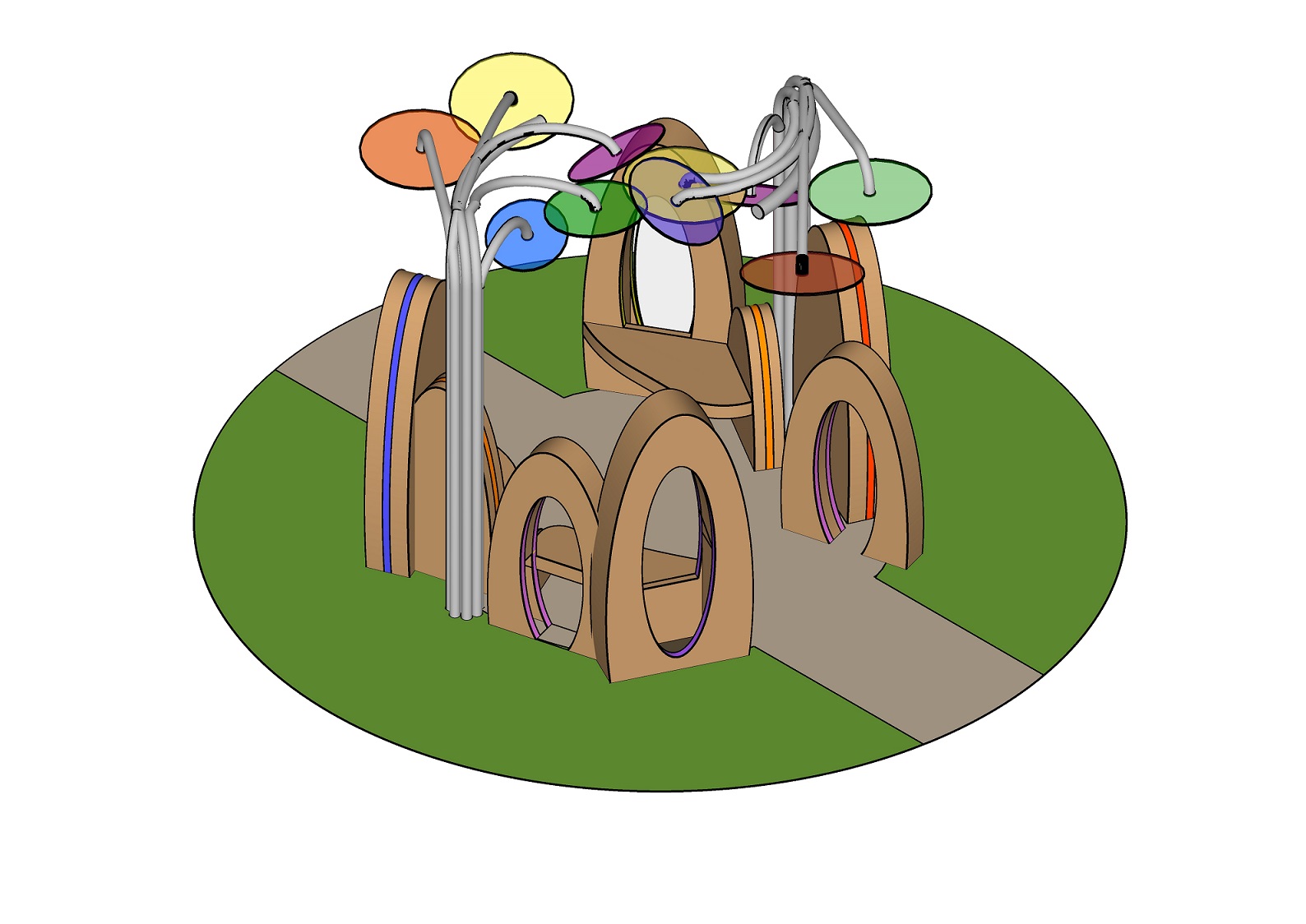
Queer Henge
A re-imagining of Stonehenge, the LGBT+ Association chose the Queer Henge project based on its unique structural features, enclosed and private places to rest and colourful overhead panels.
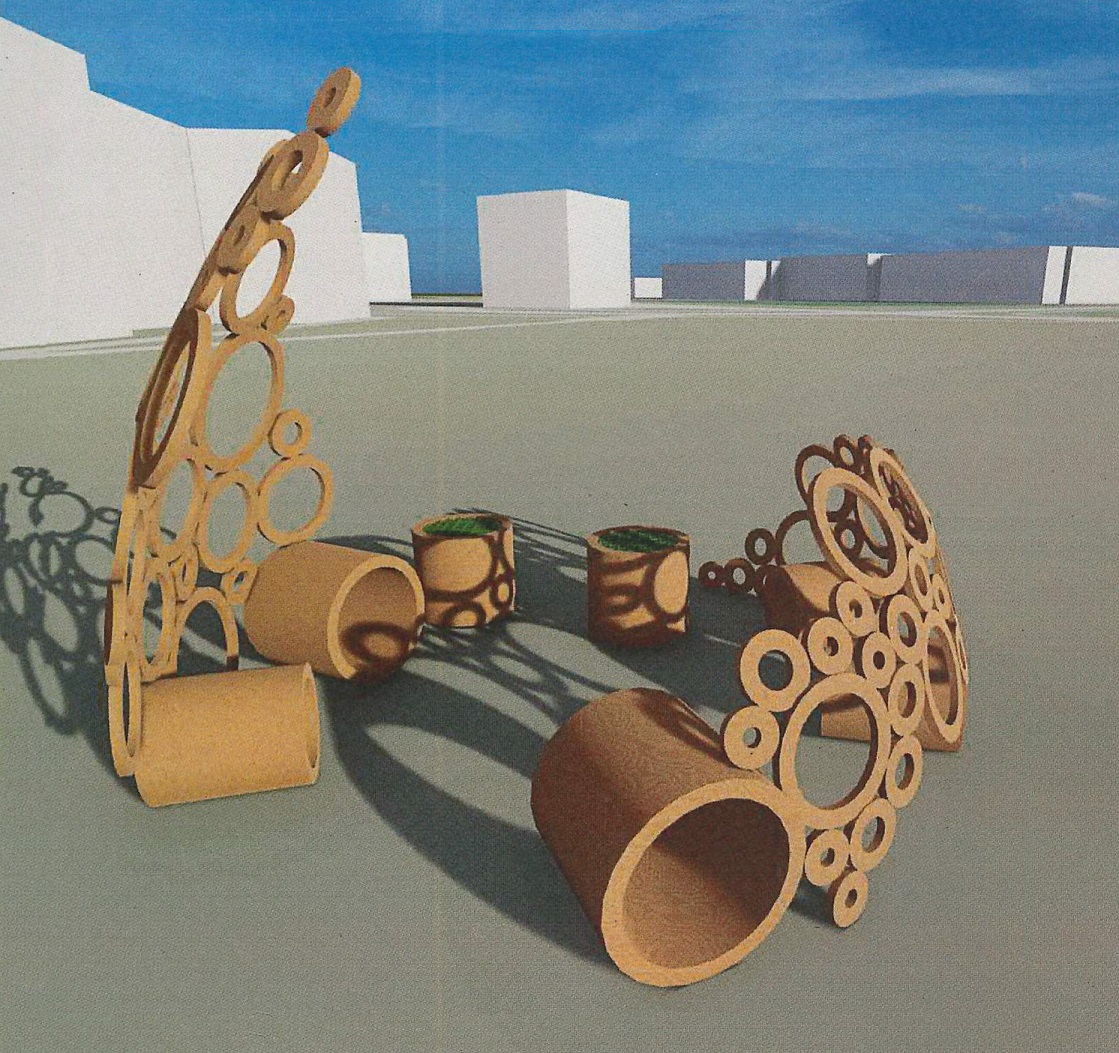
Wilde Flower
Wanting to include some interactivity into Queer Henge, the LGBT+ Association decided to amalgamate some features of Wilde Flower, the second winning design, a concept stemmed from research into the history of LGBTQ+ symbols and protests. Specifically, features of the outer structure will be interpolated into the design, space for those from the community to display artwork, knitting and embroidery. The name and floral themes stem from forms of silent protest and the playwright Oscar Wilde.
.png)
